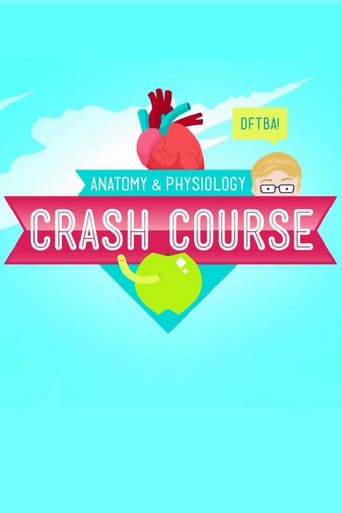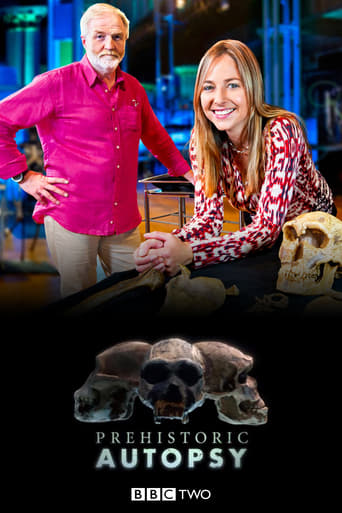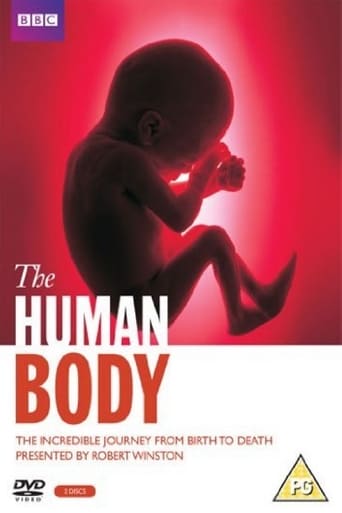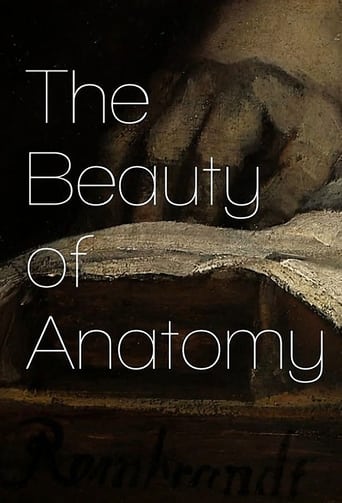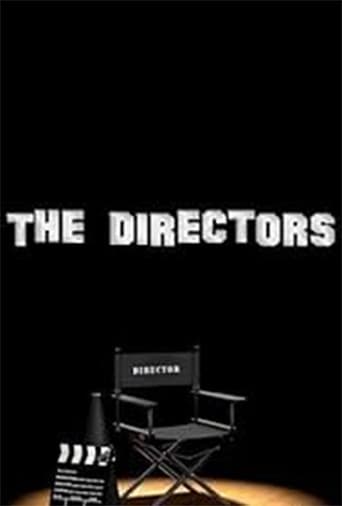Crash Course Anatomy & Physiology (2015)
Crash Course Anatomy & Physiology
2015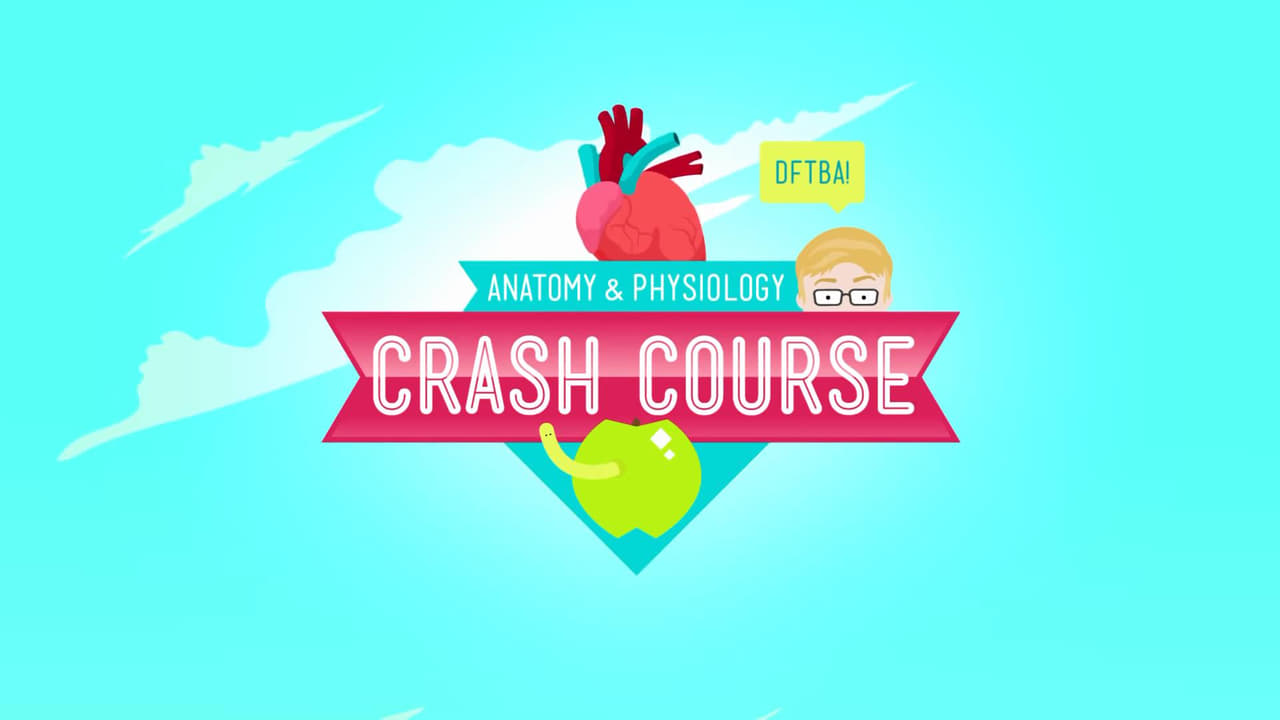
Hank teaches you the wonders of Anatomy & Physiology!
Seasons & Episode

In this episode of Crash Course, Hank introduces you to the complex history and terminology of Anatomy & Physiology.

In this episode of Crash Course Anatomy & Physiology, Hank gives you a brief history of histology and introduces you to the different types and functions of your body's tissues.

Today on Crash Course Anatomy & Physiology, Hank breaks down the parts and functions of one of your body's unsung heroes: your epithelial tissue.

On today's episode of Crash Course Anatomy & Physiology, Hank continues our exploration of tissues, with an introduction to your connective tissues.

Today Hank wraps up our look at Connective Tissues with a discussion of its various types and a breakdown of what you can and can't easily break down. Also chicken.

Anatomy & Physiology continues with a look at your biggest organ - your skin.
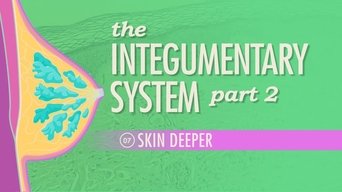
Today Hank wraps up this look at your integumentary system and all the hard work it does protecting you from and helping you interact with the world around you.

Today Hank kicks off our look around MISSION CONTROL: your nervous system.

What do you and a sack of batteries have in common? Today, Hank explains.
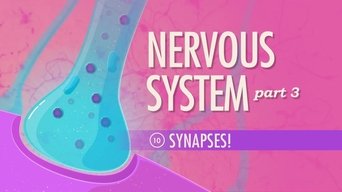
We continue our tour of the nervous system with a look at synapses and the crazy stuff cocaine does to your body.

Today Hank talks about your central nervous system. In this episode we'll explore how your brain develops and how important location is for each of your brain's many functions.

It is now time to meet the system that helps your crazy brain stay in touch with the outside world. We follow up last week's tour of the central nervous system with a look at your peripheral nervous system, its afferent and efferent divisions, how it processes information, the reflex arc, and what your brain has to say about pain.

Hank tries not to stress you out too much as he delves into the functions and terminology of your sympathetic nervous system.

This week we are looking at your parasympathetic division, which is the "resting and digesting" unit. Unfortunately, learning about this de-stressing division also involves a whole lot of memorization. Don't worry, though - we've got some mnemonic devices to help you out!

Crash Course A&P continues the journey through sensory systems with a look at how your sense of hearing works. We follow sounds as they work there way into the ear where they are registered and transformed into action potentials. This mechanism not only helps you hear but also helps maintain your equilibrium.
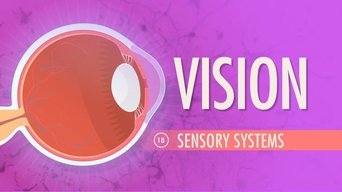
Next stop in our tour of your sensory systems? VISION. With a little help from an optical illusion, we take a look inside your eyes to try to figure out how your sense of vision works -- and how it can be tricked.
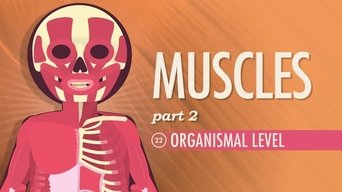
Hank calls in a friend to do his push ups for him today to explain how skeletal muscles work together to create and reverse movements. Hank and Claire also demonstrate the role size plays in motor units, the three phase cycle of muscle twitches, and how the strength and frequency of an impulse affects the strength and duration of a contraction. This episode also explains twitch summation, tetanus, and isotonic vs. isometric movements.

Hank begins teaching you about your endocrine system by explaining how it uses glands to produce hormones. These hormones are either amino-acid based and water soluble, or steroidal and lipid-soluble, and may target many types of cells or just turn on specific ones. He will also touch on hormone cascades, and how the HPA axis effects your stress response.

In the second half of our look at the endocrine system, Hank discusses chemical homeostasis and hormone cascades. Specifically, he looks at the hypothalamus-pituitary-thyroid axis, or HPT axis, and all the ways your body can suffer when that system, or your hormones in general, get out of whack.

Your heart gets a lot of attention from poets, songwriters, and storytellers, but today Hank's gonna tell you how it really works. The heart’s ventricles, atria, and valves create a pump that maintains both high and low pressure to circulate blood from the heart to the body through your arteries, and bring it back to the heart through your veins. You'll also learn what your blood pressure measurements mean when we talk about systolic and diastolic blood pressure.

Today we're talking the heart and heart throbs -- both literal and those of the televised variety. Hank explains how your heart’s pacemaker cells use leaky membranes to generate their own action potentials, and how the resulting electricity travels through the cardiac conduction pathway from SA Node to Purkinje fibers, allowing your heart to contract. He's also going to make you better able to spot inaccuracies in medical dramas by explaining how defibrillators work to reset the rhythm of your heart.

Now that we've discussed blood, we're beginning our look at how it gets around your body. Today Hank explains your blood vessels and their basic three-layer structure of your blood vessels. We're also going over how those structures differ slightly in different types of vessels. We will also follow the flow of blood from your heart to capillaries in your right thumb, and all the way back to your heart again.

And now we return to blood vessels. In this episode, we start discussing what blood pressure is, how it can become "high", and what that means for our health. One of the more interesting points is that your body has ways of dealing with high blood pressure, but they're not ways we want out bodies to operate on a full time basis. And why can't we butter our bacon? WHY!?!?!

Now that we've talked about your blood vessels, we're going to zoom in a little closer and talk about your blood itself. We'll start by outlining the basic components of blood -- including erythrocytes, leukocytes, platelets, and plasma -- as well as the basic process of hemostasis that stops bleeding, and how antigens are responsible for the blood type that you have. By the end of this episode, you should be totally prepared for your next blood drive.

It's time to start talking about some of the terrible things you can do to your own body, like blood doping. We'll start by explaining the structure and function of your erythrocytes, and of hemoglobin, which they use to carry oxygen. We'll follow the formation and life cycle of a red blood cell, including how their levels are regulated by EPO and their signalling molecules. We'll wrap up by looking at how blood doping works and how it is truly a recipe for disaster.

So we all know that breathing is pretty important, right? Today we're going to talk about how it works, starting with the nameless evolutionary ancestor that we inherited this from, and continuing to the mechanics of both simple diffusion and bulk flow, as well as the physiology of breathing, and finishing with the anatomy of both the conducting zone and the respiratory zone of your respiratory system.
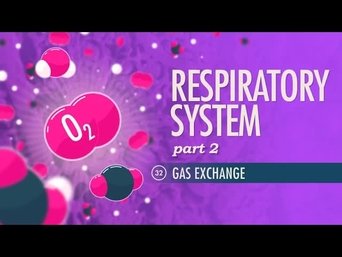
Can a paper bag really help you when you are hyperventilating? It turns out that it can. In part 2 of our look at your respiratory system Hank explains how your blood cells exchange oxygen and CO2 to maintain homeostasis. We'll dive into partial pressure gradients, and how they, along with changes in blood temperature, acidity, and CO2 concentrations, change how hemoglobin binds to gases in your blood. (And yes, we'll explain the paper bag thing too!)
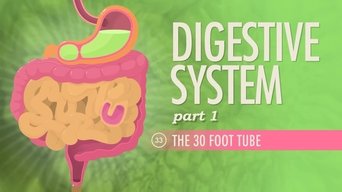
Nachos are delicious. And versatile because today they're also going to help us learn a thing or two about your digestive system. Nachos can provide us with energy and raw materials, by first ingesting something nutritious, propelling it through the alimentary canal where it will be mechanically broken down, and chemically digested by enzymes until my cells can absorb their monomers and use them to make whatever they need. And eventually, there will be pooping.
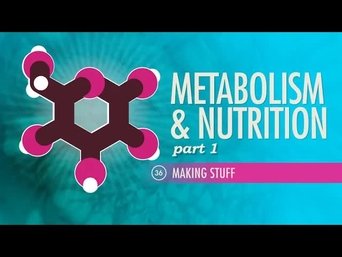
Metabolism is a complex process that has a lot more going on than personal trainers and commercials might have you believe. Today we are exploring some of its key parts, including vital nutrients -- such as water, vitamins, minerals, carbs, fats, and proteins -- as well as how anabolic reactions build structures and require energy, while catabolic reactions tear things apart and release energy.
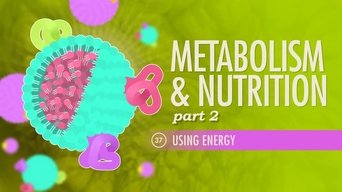
If you're like us, you love the sound of a brunch buffet. But not everything you eat at that glorious buffet is going to be turned into energy. Your body has to work with different forms of food in different ways. In this episode of Crash Course Anatomy & Physiology, Hank takes us through more about our metabolism including cellular respiration, atp, glycogenesis, and how insulin regulates our blood sugar levels.

Even though you probably don't choose to spend a lot of time thinking about it, your pee is kind of a big deal. Today we're talking about the anatomy of your urinary system, and how your kidneys filter metabolic waste and balance salt and water concentrations in the blood. We'll cover how nephrons use glomerular filtration, tubular reabsorption, and tubular secretion to reabsorb water and nutrients back into the blood, and make urine with the leftovers.

As we promised last week, we're not quite done talking about your pee yet. Today Hank explains how the urinary system regulates the production of urine, by maintaining a study glomerular flow rate. He'll also cover the anatomy of storing and excreting urine -- from the ureters to the urethra -- and the nervous system’s role in controlling the act of urination.

Human reproduction is complicated an important, and it's going to take a four part series for us to cover it. Today, we're kicking that off with the female reproductive system, starting with how sex hormones affect oogenesis and ovulation, continuing through how the ovarian and menstrual cycles mature and release oocytes, and create a comfy uterine environment for a fertilized egg.
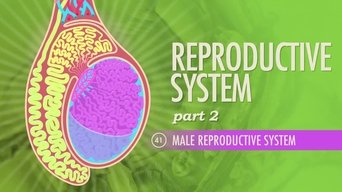
Our month-long exploration of human reproduction continues with a look at testicular anatomy, the steps of sperm production, and how it’s influenced by gonadotropin and testosterone. Hank also explains how sperm mature, and how they leave the body on a tide of glandular secretions during ejaculation.

After weeks of discussion of human reproduction, today we arrive at the main event: THE SEX. Hank explains the four phases of the human sexual response, how a sperm finds and fertilizes an egg, creating a zygote, and how different types of contraception work to prevent that from happening.

We've reached the grand finale of our four part series on human reproduction: BABIES! Today Hank walks you through the stages of pregnancy, beginning with how a zygote develops into blastomeres to a morula to a blastocyst and finally to an embryo and a fetus. He also explains some of the amazing anatomical changes that take place in the mother, and the hormonal sequence of events that lead to labor.

Today Hank explains your unsung lymphatic system and how it supports cardiovascular function by collecting, filtering, and returning interstitial fluid back into the bloodstream via a system of lymphatic vessels. He also explains the system’s major role in fighting off infection, and how lymph nodes, and other lymphoid organs, and MALT areas house antigen-attacking lymphocytes that provide crucial support to the immune system.

In the penultimate episode of Crash Course Anatomy & Physiology, Hank explains your adaptive immune system. The adaptive immune system's humoral response guards extracellular terrain against pathogens. Hank also explains B cells, antibodies, and how vaccines work.

THE FINAL SHOWDOWN! This is the last episode on the immune system and also the very last episode of Crash Course Anatomy & Physiology. In it, Hank explains how the cellular immune response uses helper, cytotoxic, and regulatory T cells to attack body cells compromised by pathogens. He also explores how cytokines activate B and T cells, and what happens if your immune system goes rogue and starts causing autoimmune trouble.
Hank teaches you the wonders of Anatomy & Physiology!
Watch Trailer
Free Trial Channels


